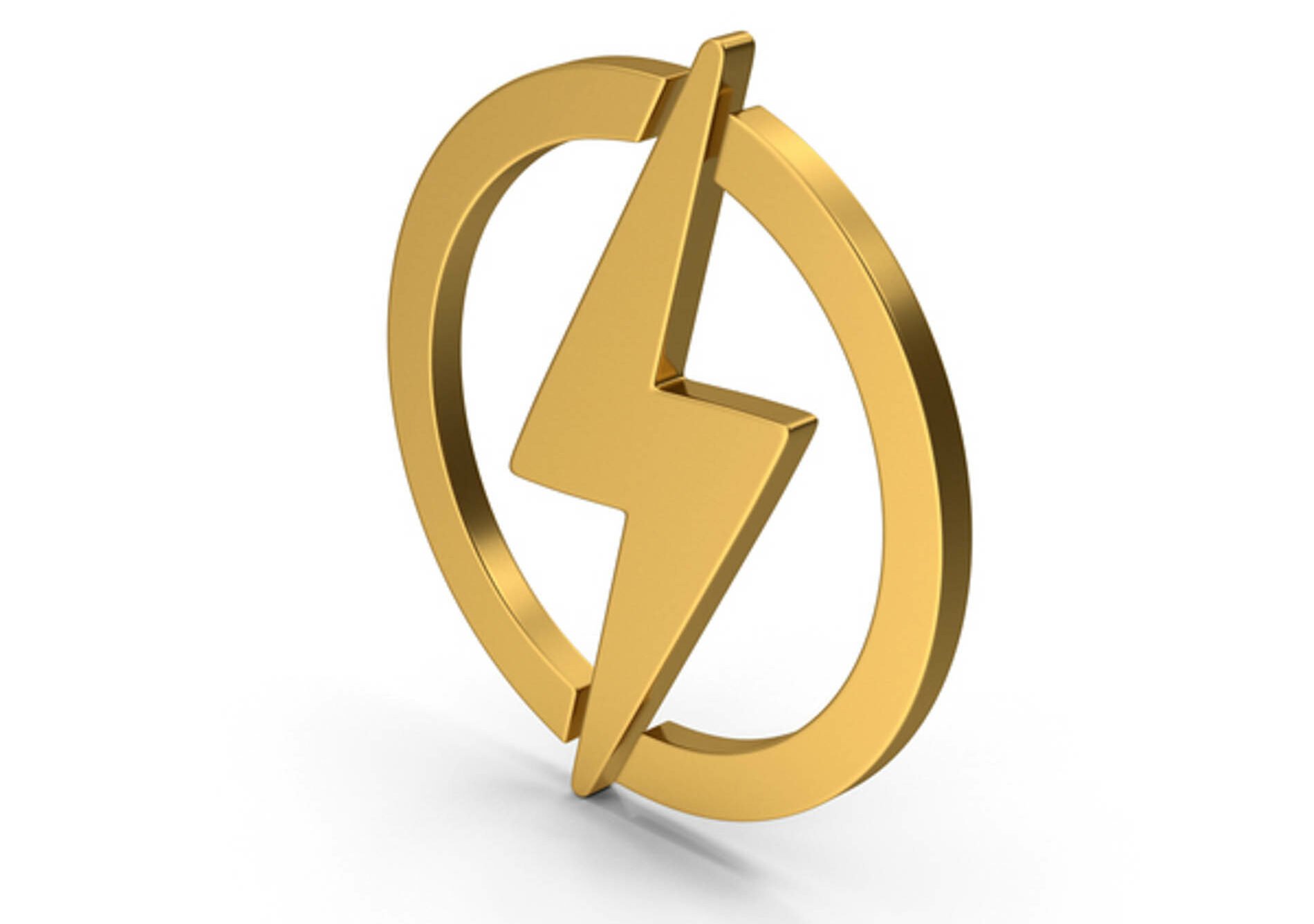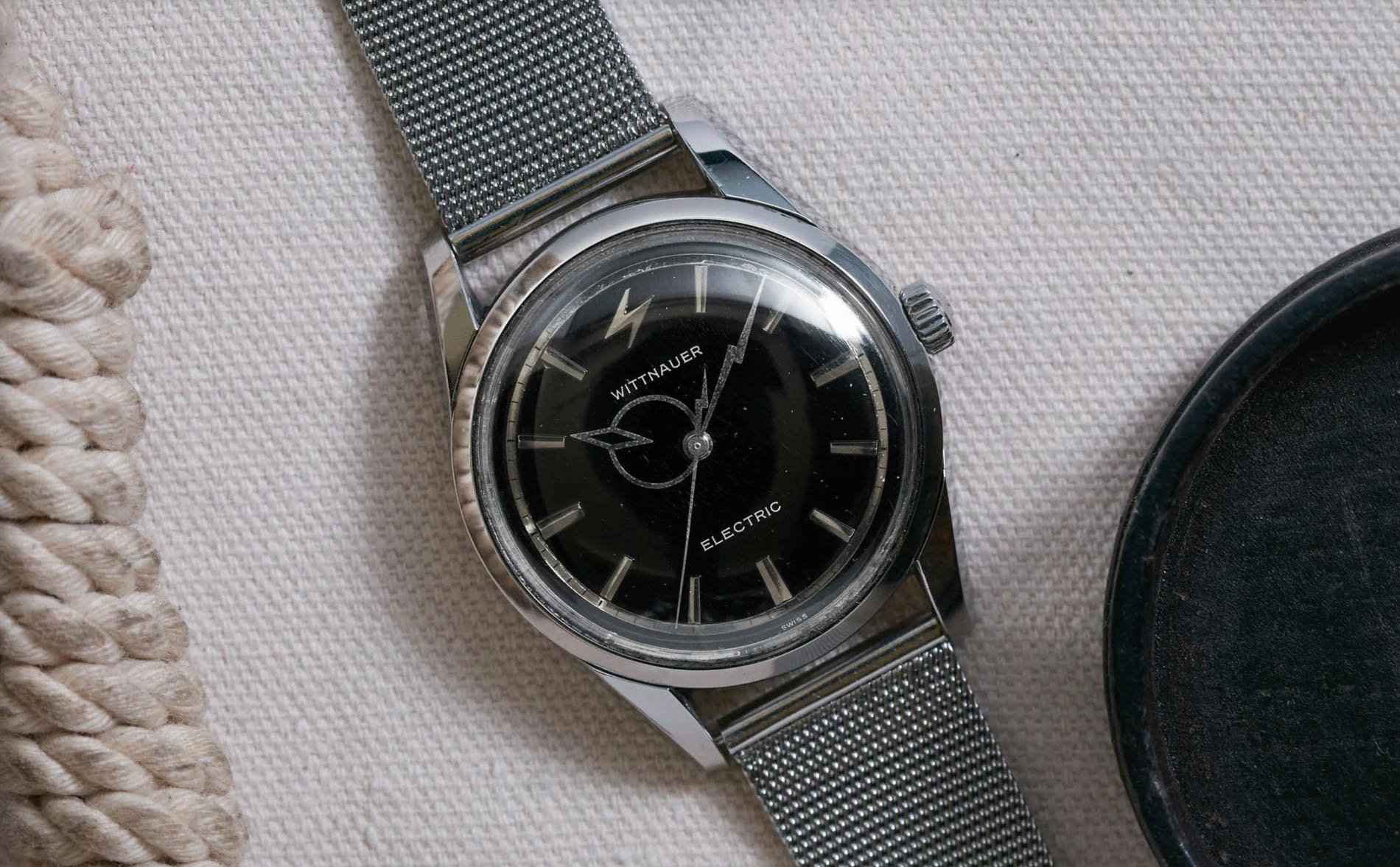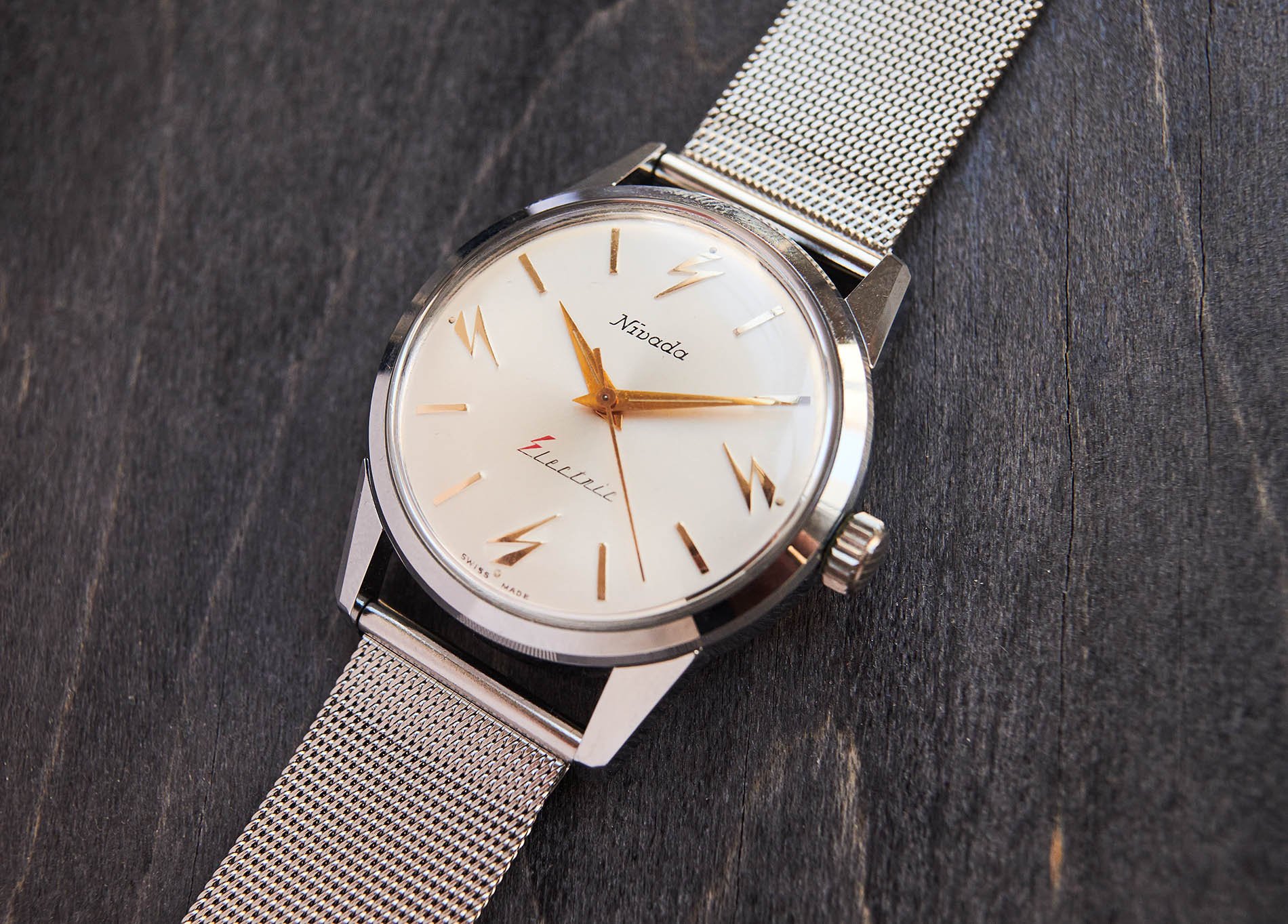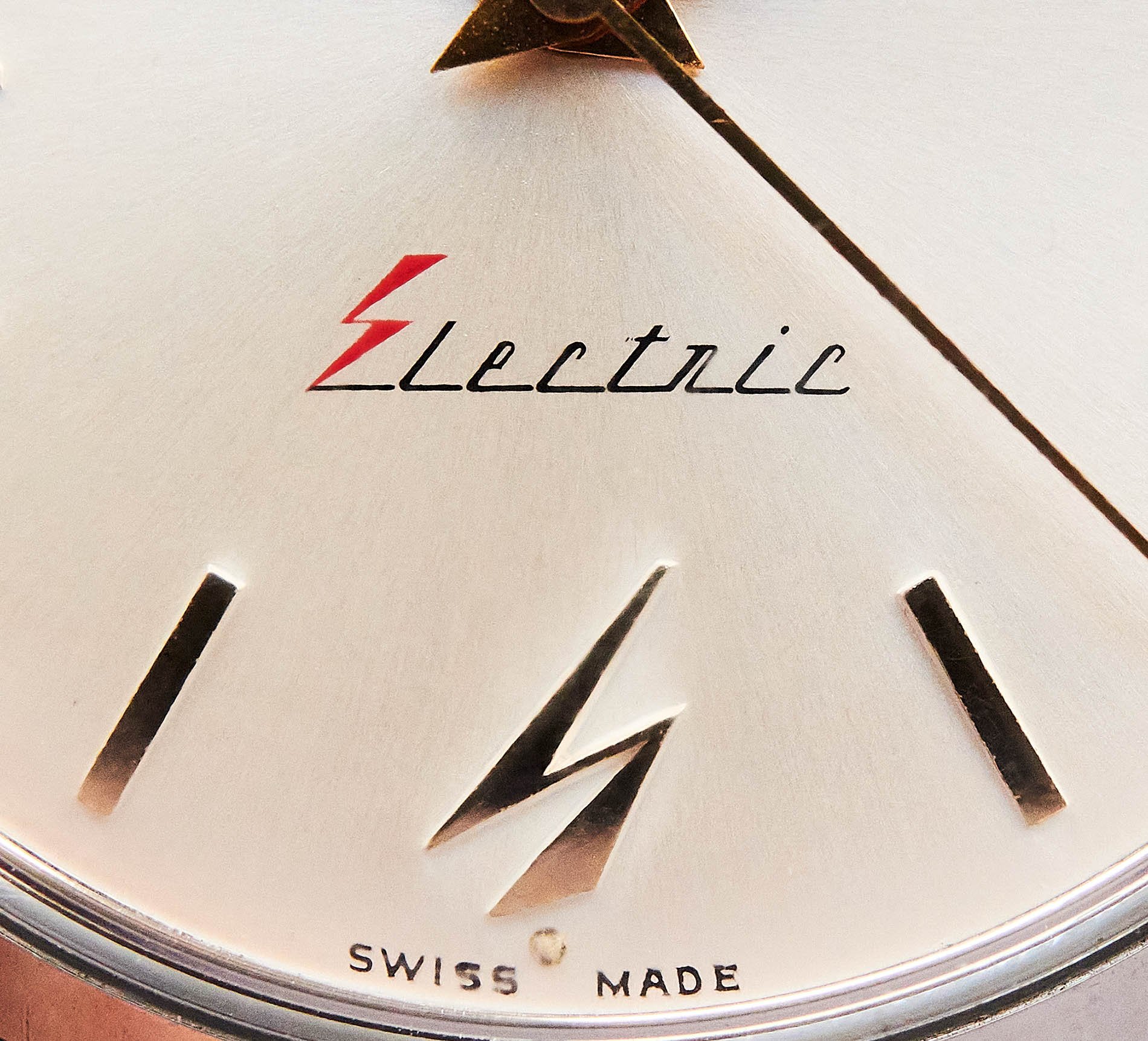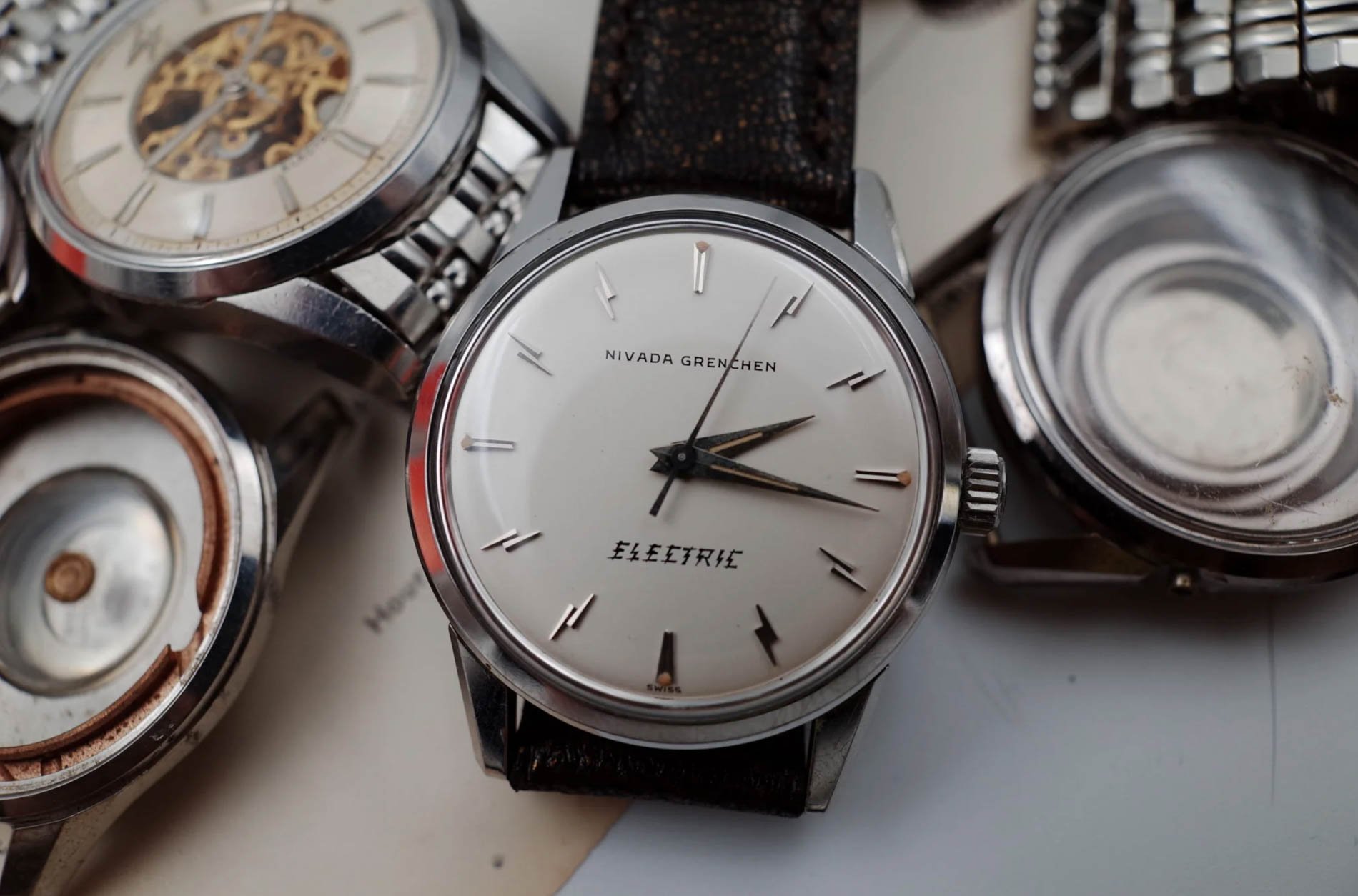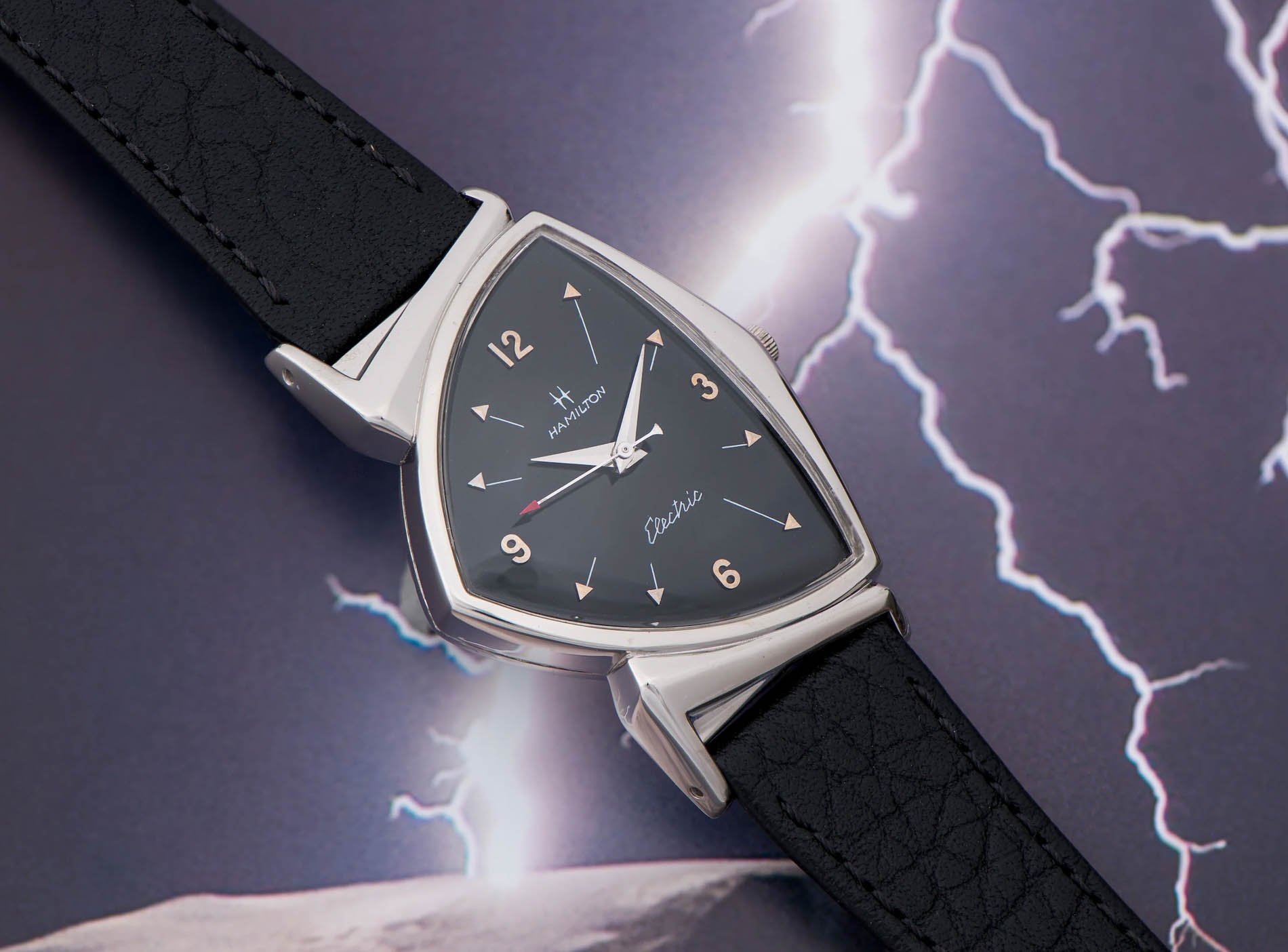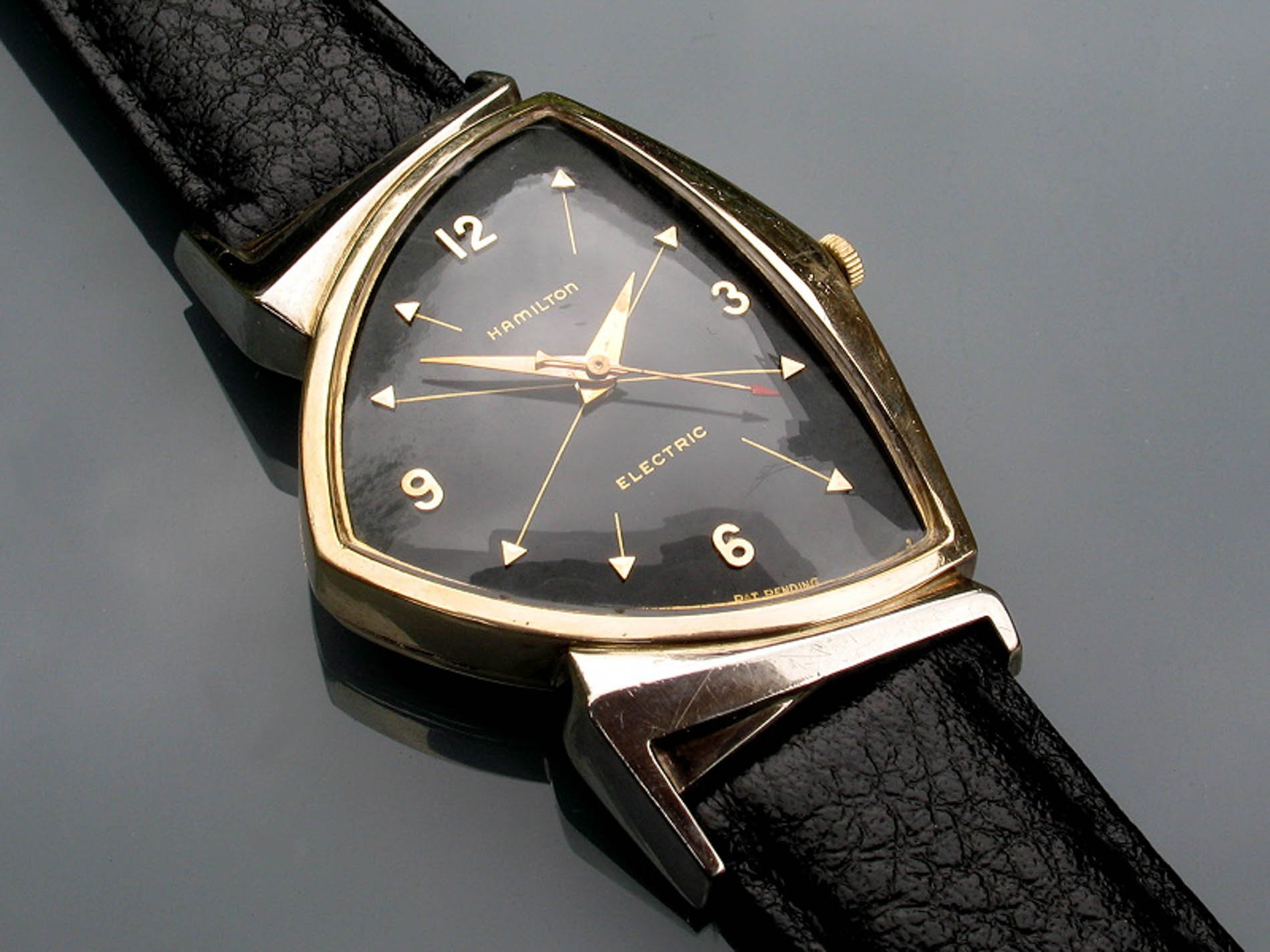#TBT Three Electrifying Dial Designs Of Early Electric Vintage Watches — Featuring Wittnauer, Nivada, And Hamilton
I am not that excited to talk about electric technology in watches. Well, at least not today. Rather, I want to draw your attention to some dial designs with so much life and energy that few others can compare. I am fascinated by symbols, and you will hardly find a better symbol than the one you can see on some vintage electric watches.
We’ve all seen hundreds of examples of typical applied indexes. A single bar, double bars, sometimes combined with another short bar, even triangles… They are basic geometric shapes, decent and neutral. Indeed, they are generic, almost “default.” They do not attract too much attention, and they do not disturb. Designers gave them heights, widths, angles, grooves, and different polishing all just to add some differences and emotions to their dull shapes.
Lightning bolt
When I say “electric,” I bet there is just one symbol you see in your mind. The lightning bolt, indicating an electrical hazard, is one of the most commonly used safety symbols in the world. I am not surprised it found its way into dial designs back in the ’60s. And how different it is if you compare it to traditional hour indexes! Funnily enough, if you look at it, it’s still just two thin bars, slightly angled and connected with another short bar in between. Regardless of its simplicity, it is still full of explosive energy, packed with emotions and action. Let’s take a look at some vivacious vintage watches that proudly bore this symbol.
Wittnauer Electric
We’re starting with the big guns. This, my friends, is the ultimate design for an electric watch. It is daring and bold — the Wittnauer Electric. It didn’t need any other name. The electric tech was new and strong enough at the time. All the effort was put into one of the most memorable handsets ever designed. I’m talking about a Juvenia Architect kind of ball game…
The Wittnauer Electric features one prominent lightning bolt at 12 o’clock. This one is a bit stylized, but it’s nicely balanced and feels harmonic. The lightning bolt for the minute hand is wilder, just like the one you can see integrated into the counterbalance of the central seconds hand. The big hour hand — or shall I say “hourly ring with a diamond tip”? — looks like it was freshly cut from an electrical diagram. The dial needs nothing more. You just need to decide if you need it in black or shiny white.
Nivada Electric
Same symbol, same name, just one level more expressive than the Wittnauer. Why is that so? The Wittnauer Electric’s lightning-bolt index looks like it’s ready for the theater. The bolt on the Nivada Electric, though, looks like it’s ready for a rock concert. Oh, and there is not just one of them but another three, all pointing into the middle of the dial.
While Wittnauer kept the font for “Electric” boringly standard, Nivada took it one step further and threw one more red bolt into the capital “E” in the “Electric” signature. Honestly, “signature” is a great term for what it is. The old-school, technical font is pure magic, and it perfectly complements the four big lightning bolts.
Extremely electric…or too electric?
Until recently, I had never seen this Nivada Grenchen watch before, but I found it here. I dare say you won’t find any other watch that features that many lightning bolts on the dial — 16, to be precise!
Hamilton Pacer Electric
There are no lightning bolts here, but the design is electric enough. We are sliding back on the historical timeline a few years to 1957. On January 3rd of that year, a press conference was held to introduce the “Watch of the Future.” While Omega won the race for the first watch on the Moon, Hamilton can claim the victory of the world’s first electric wristwatch. And what a style it had!
Between 1957 and 1969, there were about 39,000 Hamilton electric watches produced. There were three variations of the electric movement inside — the 500, 500A, and 505.
One of the designs for Hamilton’s early electric models — and undoubtedly the most sought-after — is the Pacer Electric. It doesn’t have a case shape that you see every day. Then again, an electric watch was something the public hadn’t seen before anyway. The case actually looks like it was charged with an electric current.
What I like the most, even more than the asymmetrical triangular case, are the eight arrows for the hour markers. The tips of these arrows are applied triangular indexes, while the thin lines are “just” printed. Though these are different applications, they combine well into a compact design. Interestingly enough, while most dials are “closed” and draw the eye toward the center, the Hamilton Pacer goes against the stream. All the arrows point outward, making it feel like a miniature but epic explosion.
Do you know of any other early electric watches with electrifying dials? If you do, let me know, and as always, happy hunting!
Featured image: Analog:Shift

